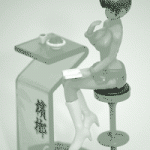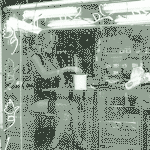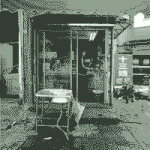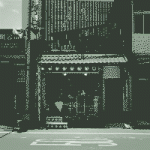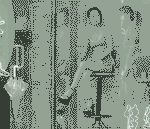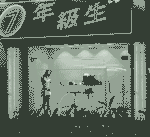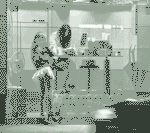On 11 November 2013 indigenous Chakma (Tanchangya) villagers were attacked by a group of Bengali land grabbers at Mosharkholar village in Palongkhali union of Ukhiya upazilla under Cox’s Bazaar district. At least seven women sustained serious injuries and few women were sexually harassed in this attack. On that day a gang of Bengali miscreants led by Shafiqur Rahman alias Prakash Mutia (55) son of late Abdul Manjur made a blitz upon the indigenous Chakma people of Mosharkholar as they (Chakmas) had protested the forced grabbing of the land of Sujit Chakma (35) son of Amroracha. It is learnt that on the night before the incident (10 November), Shafiqur and his fellows dug across the dam of Sujit Chakma’s fish farm and released water from therein with the intention to occupy Sujit’s land that he leased from the Forest Department few years back. Then on the day of the incident miscreants started to prepare the land for agricultural cultivation in order to secure Shafiqur’s occupancy over that land. Then the Chakma villagers came to know about the incident and they protested the encroachment. At around 2:00 pm the gang of Shafiqur along with other Bengali villagers brutally attacked the Chakma villagers with deadly weapons such as knife, machete, and stick. As a result, following persons were seriously injured: 1) Shanti Devi Chakma (30) wife of Sujit Chakma; 2) Mashingfu Chakma (40) wife of Kinadhon Chakma; 3) Mashoh Chakma (27) wife of Chintaimong Chakma; 4) Newsha Chakma (26), wife of Lamong Chakma; 5) Gudume Chakma (26) wife of Olataing Chakma; 6) Shinesing Chakma (40) wife of Oyiyamong; and 7) Rukchamong Chakma (29), daughter of Choimongla. The miscreants also sexually abused the women present at the spot tearing their clothes. Besides, the miscreants snatched the mobile phones and other valuables from the victims while the attack was being made. Notably, even prior to this particular attack, the perpetrators used to make similar attack against the indigenous peoples of that area and spread religious and racial hatred with the intention to grab their lands. Indigenous villagers alleged that a local influential group backs such attacks from behind the curtain. In the incident on 11 November 2013, Munu Mia, son of Shahar Mulluk alias Surur, the general secretary of ruling Awami League’s Ward No. 6 branch of Palongkhali union was allegedly involved with the attack. However, persons involved with such incidents have always enjoyed impunity. A complaint was lodged against the perpetrators naming 35 people with Ukhiya police station. On the other hand, the perpetrators also made a complaint against the victims. When contacted, assistant sub-inspector of police Shimul Barua of Ukhiya police station informed that they had made an investigation of the incident. And a negotiation between two parties is likely soon as both the parties have agreed upon it. It is also learnt that a 6-member committee comprising 3 representatives from each Chakma and Bengali community was formed. However, while the committee started arbitration at Ukhiya police station on 18 November 2013 around 5:00 pm, Sub-Inspector (SI) of Ukhiya police station Mr. Shimul Barua one-sidedly fined taka 5000 to Bengali perpetrators and forced Chakma villagers to come up compromise with this money.
November 23, 2013
Bangladesh: Attack On Indigenous Villagers By Bengali Land Grabbers In Cox's Bazar Leaving 7 Women Injured
November 21, 2013
Exile Islands
Histories of Exploitation
Exile Islands, Then and Now
by DEANNA RAMSEY
Christmas Island sits 220 miles off the southern coast of Java, a tiny, isolated Australian territory in the Indian Ocean. Boven Digoel is a remote spot of jungle on the island of New Guinea in Indonesia’s Papua province, once accessible only by a days-long journey upriver.
Aside from being both tropical and secluded, these sites share something darker and more ignominious, for Boven Digoel was a penal colony established by the Dutch in 1926 for rebels and critics of the colonial government, and the way-station for asylum seekers known as Christmas Island is our modern-day equivalent, a place for the marginalized of the globe to live out lives in geopolitical limbo.
So many boats filled with people from the Middle East, South Asia and Africa were landing on Christmas Island in the last decade that the Australian government built a US$370 million detention center there in 2009. The site houses more than 2,000 people, and sits in one corner of the 12-mile-long island.
The increasing number of asylum seeker arrivals to Australia – more than 15,000 in 2013 alone – has become such an issue that in July former Prime Minister Kevin Rudd took a new “hardline” stance, saying that no one arriving by boat would ever be allowed to settle there. He announced that new arrivals would be moved to a center on Papua New Guinea’s Manus Island for processing and possible resettlement, while also granting the country a much-needed assistance package. In August, Rudd announced a similar agreement with the South Pacific island nation of Nauru.
Now, instead of Christmas Island’s isolation, those from conflict-torn countries seeking better lives are being sent to a 60-mile-long stretch in Papua New Guinea’s northern waters or to Nauru’s even more remote eight square miles, left to wait indefinitely for their refugee claims to be processed.
Considering the history of the region, these moves to expel people to ever more distant locations – and essentially dodging the reasons why so many are there in the first place – bleakly echo polices of detainment and exile practiced by colonial-era powers.
The use of Australia as a penal colony is an obvious example, and the British East India Company banished its colonized subjects to the Andaman Islands and Singapore. The French employed New Caledonia in the Pacific and the infamous Devil’s Island in Guiana in similar ways, to name just a few.
After a failed communist uprising in Jakarta (then Batavia) in 1926, the Dutch created Boven Digoel, a prison deep in New Guinea at the easternmost border of the Dutch East Indies. The site housed those espousing communist and revolutionary views, including Sutan Sjahrir, future prime minister of Indonesia, and Mohammed Hatta, who would become the country’s first vice president.
The region’s modern exiles, fleeing countries that are centers of contemporary conflict like Afghanistan, Myanmar and Iraq, must pay people smugglers to take them on the hazardous journey to Australian territory, but they often do not reach their destination.
The rickety wooden boats that smugglers employ routinely break down and sink, with asylum seekers drowning in the seas between Indonesia and Australian territory. In 2010, a boat dashed upon the rocks on Christmas Island’s shores and 50 people drowned. In September, a boat heading to the island sank off the coast of Java, with at least 28 killed. And in October, 30 asylum seekers from Pakistan, Somalia and Eritrea were discovered on an Indonesian beach intending to travel to Christmas Island. According to reports, after a dispute with the smugglers they had paid, they were abandoned and later taken into custody by police.
The journey to Boven Digoel in the 1920s and 30s was not as fraught with danger, with Sjahrir even writing eloquently of the beauty he experienced during his voyage from Jakarta. But life in the penal colony was bad, with prisoners dying of disease, eaten by crocodiles or weakening through their efforts to create new homes in hostile jungle. Mas Marco Kartodikromo, an accomplished writer and vocal critic of the colonial government, was sent to Boven Digoel in 1927; in 1932 he died there of malaria, as many inmates did.
In both the colonial prison camp and our modern-day detention centers there was anger, rebellion and attempts at escape. In Boven Digoel, so many refused to do the work required of them that a special site was created for those “recalcitrants” to live in even further exile. Escape attempts were unsuccessful as no one could navigate the jungle. Some were caught, others just disappeared, never to be heard from again.
In March 2011, the recalcitrants of Christmas Island rioted, some jumping the center’s fence and heading to the airport, others setting fire to buildings, including their own tent accommodations, and throwing rocks at police. And on July 19 of this year, a riot by the mostly Iranian detainees at the Nauru center, reportedly in frustration at the interminable waiting involved in the processing of their claims of refugee status, destroyed many of the site’s buildings.
A United Nations Refugee Agency (UNHCR) report from February 2013 on Manus’ center states, “the current policy and practice of detaining all asylum-seekers on a mandatory and indefinite basis, without an individual assessment or possibility for review, amounts to arbitrary detention which is inconsistent with the obligations of both Australia and PNG under international human rights law.” A December 2012 UNHCR found that Nauru’s center did not meet international standards and the conditions were “harsh, with little natural shelter from the heat during the day.” Images illustrate this, showing row upon row of tents exposed to the elements in Nauru and Manus and Christmas Island’s prison-like center wrapped in fencing and topped with barbed wire.
How strange it is that the inconspicuous Christmas Island has emerged as a destination, a space that connects Indonesia and Australia across sea – and now through the desperate people crossing their borders – and also entwines the shared colonial histories of the region. On a map, one can almost trace a straight line from Christmas Island, named by an East India Company voyager, to Boven Digoel and its echoes of the Dutch colonial past, to Manus, which was German colonial territory and later British, and on to the former German colony of Nauru.
Christmas, Manus and Nauru, with their histories of exploitation, now house modern colonies designed to imprison the innocent. The places are marked by the denial of rights, imperialist attitudes and little recourse – all on far-flung tropical islands populated by people who never intended or wanted to stay.
But one difference between then and now is that almost immediately after Boven Digoel was established, dispatches from the prison were published in newspapers throughout the Dutch East Indies, as historian Takashi Shiraishi has noted. The public could read Mas Marco’s description of the shackles he was kept in during his journey to the camp, or Sjahrir’s encounters with the locals of the New Guinea jungle or even a fictionalized account of life at Boven Digoel by the writer Kwee Tek Hoay serialized over three years in a weekly paper.
But what do we hear from our modern-day exiles, people who have fled war and terror and strife and risked their lives to make it to safer shores? Aside from news documenting political maneuverings or boat arrivals and, regrettably, capsizings, there is little from the detained themselves, especially ironic in our age of mass and social media. Those who are detained – the families even – have traveled far, far from their homes in hopes of a respite from conflict and have ended up in ironically named “centers”, with no voice and no recourse but the occasional riot.
Before arriving in Boven Digoel, Hatta somewhat optimistically wrote that he hoped the exile camp might become a “Mecca” for the progressive movement in Indonesia, a place where new leaders could emerge. And while he was certainly correct about himself, there were many others who never, ever left the place.
In December of 1938, the Dutch minister of the colonies wrote to the governor general on the closing of Boven Digoel, “That I am of opinion that the Netherlands authority over the Indies derives its great moral prestige in the world from its effective and humane administrative methods and [therefore I believe that] the sooner it can do without the exceptional means of a special place of internment, the better.”
We can only hope similar correspondence will be sent regarding the “immigration detention centers” marring our southern oceans, for those immigrants – the victims of humanitarian crises that spring from very global issues – deserve much, much better.
November 20, 2013
Save Jeju Now No War Base on the Island of Peace
Save Jeju Now No War Base on the Island of Peace
History an introduction to jeju One Island Village’s Struggle for Land, Life and Peace
By Anders Riel Müller* | April 19, 2011
In early April I had the chance to visit one of the most beautiful areas in South Korea. Gangjeong Village on the island of Jeju is a small farming and fishing community on the island’s southern coast. Entering the village you see citrus groves and greenhouses on all sides. On the main street, women were sitting on the sidewalk cleaning fish and selling them to the locals. The cherry trees lining the main street were just beginning to bloom. It was a welcome break from congested and crowded Seoul where I live. In many ways it reminds me of the island in Denmark where I grew up. Nothing special seems to be going on, and that’s the beauty of it. But this community of approximately 1,500 farmers and fishermen is in the midst of a struggle against the South Korean government’s attempt to build a major naval base right in the middle of their village. The Navy and the Korean government claim that the base will have minimum impact on the environment and that it will create jobs and attract new tourists to the area. The villagers will have none of it. They see that the base will destroy their way of life, their village and the peace that Jeju islanders strive for. But the navy continues to raze farms and fishing grounds despite their protests. Jeju’s Geo-strategic Curse
The island of Jeju is as far away from Seoul as you can get geographically and mentally. This autonomous island province, located south/southwest of the Korean peninsula is in many ways distinct from mainland Korea. It’s relative geographic isolation, volcanic geological history, and warmer climate has formed a people whose traditions, food, and culture is as distinct as the islands natural features. Because of this, Jeju is also the biggest single tourist destination in Korea often named “Honeymoon Island” as it is a favored destination for newlywed Korean couples. The island economy is also distinct. Agriculture, tourism, and fishing are the three main economic sectors, helping the island preserve its natural beauty and traditional way of life. Development in Jeju can be said to have followed a pace in which it was possible to modernize without having to completely compromise the island’s environment, traditions and culture. This is not to say that Jeju is an untouched island paradise. Luxury tourist resorts, golf courses, and tacky tourist attractions can be found in many places, but once you venture a bit off the beaten path you will find the Jeju that makes it a special place.
Nevertheless, Jeju’s curse is its strategic location between South Korea and Japan, and its close proximity to China. It is only 300 miles from the Chinese mainland and Shanghai. For centuries, Jeju has been the battleground for conflicts that had little to do with the islanders themselves. In modern times, Jeju was annexed along with the rest of the Korean Empire by Japan in 1910. Thousands of island men were sent to work in mines and factories in Japan and Manchuria, while women were forced into prostitution to service the Japanese Imperial Army. Towards the end of World War II, the Japanese heavily fortified the island, deployed 70,000 soldiers, and forced the islanders to construct coastal defenses in anticipation of a U.S. invasion. When Japan surrendered in 1945, Jeju joined the rest of Korea to celebrate the end of decades of colonial rule and exploitation. But for the people of Jeju, the horrors experienced under Japanese rule were nothing compared to what was to come. The Jeju Massacres
The division of the Korean Peninsula by the United States and the Soviet Union turned Jeju into a battlefield for subsequent cold war conflicts on the peninsula. In 1948, with U.S. and U.N. support, South Korea held elections that established a separate state in the south, thus solidifying Korea’s division. In response, 30,000 islanders in Jeju went out to protest the elections, which was abruptly ended when police opened fire and killed eight protesters. This prompted riots throughout the island and the boycott of the South Korean elections by Jeju islanders. Unfortunately, the United States overseers annulled the Jeju election results due to their lack of participation, and Syngman Rhee was elected without the votes from Jeju counted. But that wasn’t all. Korean right wing nationalists labeled the entire island as Communists sympathizers. When U.S. backed leader Syngman Rhee took power following the elections, he initiated a massive “Red” cleansing campaign targeted the Jeju general population. Using the South Korean military and ultra rightist paramilitary groups from the Northwest Korean Youth Association, the Rhee government employed a scorched earth strategy of repression resulting in the indiscriminate raping of women and burning of villages. Thousands of people were killed. It is estimated that 70 percent of entire villages were razed to the ground and 30,000 people—ten percent of the island’s population—were murdered. It was a brutal precursor to what the mainland would experience during the Korean War.
At the newly constructed Peace Park Museum and Memorial for the massacre, one can take a few moments to reflect on Jeju’s fate as a battleground for imperial and ideological conflicts and the meaningless loss of lives that people here have suffered. I went there on April 4th for the commemoration of “Sasam” as the massacre is called locally. From the thousands of people who were gathered for the memorial ceremony, it is clear that the massacre has left deep scars in Jeju society. For years, any mention of the massacre could lead to imprisonment and torture. Relatives of those who had been labeled as Communists were prevented from taking public service positions or jobs in many companies. Many are still afraid to talk about what happened.
It was not until 2006 that the late President Roh Moo-Hyun officially apologized for the massacre and designated Jeju “Island of World Peace”. For 50 years, successive governments in Seoul silenced the Korean people’s memories of systematic murder, rape and torture. As one exits the museum, a sign reads: “Jeju April 3rd Incident will be remembered as a symbol of the preciousness of peace, unity and human rights.” But the government’s memory is short. Plans for a major naval base on Jeju had been in the works since 2002 at different locations, but opposition from local residents halted construction several times. The Plight of Gangjeong Village
In Gangjeong however, the navy and the South Korean government seem determined to construct the base by any means necessary. I met an artist and activist Sung-Hee Choi is living in Gangjeong to support the struggle of the villagers. Gangjeong means the “Village of Water,” she says, referring to the abundance of surface fresh water in the area, a rarity on this island of porous volcanic rock. The clean water from the Gangjeong stream is what makes the farmland some of the most fertile on the island. Greenhouse after greenhouse and miles of citrus orchards confirm that farming here is a good way of life for the residents. Much of this will soon be paved over if the Navy and central government get their way. As we walk down to the beach, we pass bulldozed fields with chopped down wilted citrus trees and collapsed green houses. The Navy contractors from Samsung and Daerim are not wasting any time. It is quite obvious that such physical destruction is part of the Navy’s strategy to silence resistance in the village. Some residents have already given up the fight and sold their land fearing that they will be fined if they did not sell. The government alleges that the construction is legal, that the residents have been offered fair compensation, but many locals feel pressured and cajoled into selling their land.
Down at the beach one quickly recognizes that this is a uniquely beautiful coastal stretch. The volcanic rocks, many coves and unique fresh water tidal pools provide habitats for a wealth of animal and plant life. Underneath the water, endangered soft corals provide habitat for an abundance of sea life. The importance of these ecosystems have been officially recognized by UNESCO as part of its designation of the Jeju biosphere reserve and the provincial government is currently seeking nomination as one of the 7 Natural Wonders of the World. But again the government seems to care little about these designations. Construction companies have already destroyed large areas of volcanic rock formations with their bulldozers and trucks.
As we walk along the cliffs and lava rock formations, we have a moment to stop at a few of the fresh water tide pools filled with marine life. “I never noticed these pools before,” Sunghee says. “I have been too busy watching the navy watching us.” She points to the navy headquarters a few hundred yards away from where they track and monitor all movement on the coast. Except for a few women gathering shellfish, we are alone. Sunghee tells me that usually spies working for Samsung or the Navy disguised as sport fishers watch them. I can see that the constant monitoring is taking its toll on both activists and villagers. Each time I saw Sunghee over the few days, she always looked exhausted. From the perspective of villagers and activists, the navy is playing a game of psychological warfare with those who oppose base construction. We walk back to where we entered the beach. Artworks, posters and boards tell visitors about the unique ecosystems of this coastal stretch and how all of it will be destroyed by the base construction.
On the rocks we meet well-known movie critic Professor Yang Yoon-Mo. A Jeju native, Mr. Yang has lived in a tent on the rocks for four years to protest the base construction. I ask for a brief interview but Mr. Yang declines. “There is no more to be said or explained,” says Yang. “Now I just want to enjoy the beauty of this place.” It is a beautiful and quiet spring day and the coast is almost deserted besides a few tourists. The peace is disturbed only when two minivans come down to the beach. Sunghee’s and Mr. Yang’s faces light up. The minivans have transported solidarity delegations from Okinawa and Gwangju to Gangjeong to support the villagers. Both delegations have experienced the consequences of being victims of larger geopolitical and ideological conflicts. Okinawans have protested U.S. military presence for decades and Gwangju delegates are relatives of the victims of the brutal Gwangju massacre in 1980.
Sunghee explains that construction machines are usually there, but that they were probably withdrawn for fear of conflict with protestors during the weekend of the Sasam commemoration and the solidarity demonstration announced by the Korean Confederation of Trade Unions (KCTU). Several villagers, including the mayor, have been injured and arrested from skirmishes with the police. It seems that this day the Navy and construction companies have decided it is wisest to withdraw given all the media attention during Sasam. Why the Naval Base on Jeju
The Korean Navy claims that the new ”eco-friendly” naval base will create jobs and increased security for the island. But it is difficult to imagine an eco-friendly 50-hectare naval base that will house 8,000 marines, up to 20 destroyers, several submarines and two 150,000-ton luxury cruise liners. Considering that each destroyer has up to a 100,000 horsepower engine it is difficult to see how the base can be considered safe for an ecologically sensitive environment, not to mention that most of the volcanic rock formation will be paved over with cement and concrete. The second argument is that the new base will provide an economic boost for the island. But what kind of jobs will be created? People in Gangjeong are farmers and fishers living off the wealth of land and sea. The jobs that usually accompany military bases are more likely to be in service industries such as bars, brothels and souvenir shops. The sheer size of the naval base will inevitably lead to the complete erasure of this community, and the villagers know it.
The final argument for the base is that it will provide vital security for the island. But history shows otherwise. Any time a major military force has been present on the island it has led to death, displacement, and destruction of the local population. Jeju islanders experienced atrocities from the Japanese during the occupation and later by their own countrymen during the Jeju massacre. The real issue here is not about the security of Jeju, but rather the strategic placement of a new naval base tasked with securing shipping lanes which are the lifeline of South Korea’s resource intensive corporations. This new strategically located fleet will also take on an increasingly offensive role in the East China and South China Sea.
In a recent article Christine Ahn and Sukjong Hong reveal how the base will play a strategic role in efforts by the U.S.-South Korea-Japan alliance to reign in Chinese naval expansion. While South Korea claims that the base is not intended for use by the United States, the likelihood that the U.S. Navy would utilize the base in any military conflict in the region is obvious given U.S. operational control over Korea’s military. The base is also viewed by some in the military establishment as symbolic of South Korea’s emergence as a world power in which the navy will play a central role. In an interview with the conservative paper JoongAng Daily Admiral Jung Ok-keun of the ROK Navy said, “The establishment of the flotilla is a sign that we are becoming one of the powerful navies in the world, the goal we have been dreamed of.” There can hardly be any doubt that this new 953 billion Won naval base will serve as a strategic offensive outpost for South Korea and its allies. In this context it is difficult to understand how a base in Gangjeong will increase security for Jeju residents. In a potential military conflict with China, Gangjeong will be an important strategic target, just as Pearl Harbor was for the Japanese in WWII. Still Hope
Sunghee and I walk back to the village. She is clearly encouraged by the arrival of the Gwangju and Okinawa delegations, and re-energized by the peaceful and beautiful coastline. After teaching an English class to some local students, we walk over to one of the local restaurants for dinner before joining a solidarity demonstration organized by KCTU later that evening. We have to give up finding food in the center of the village because most of the restaurant owners have left for the demonstration. Sunghee tells me that the village has been torn apart by the struggle – neighbor against neighbor, and relatives and against relatives. Many have given up, exhausted and fearful of the Navy. Not all, however, have thrown in the towel.
We arrive at the community soccer field situated right across the road from the main gate to the Navy headquarters. We greet the dog that activists, in a gesture of humor, have placed to watch the Navy headquarters, and join the 1,300 protesters who have come from all over Korea to support the villagers. It is already dark when we arrive, but the hundreds of candles held by the protesters provide a comforting atmosphere. Protesters are of all ages and walks of life: families with children, villagers, workers and activists. Watching the crowd sing songs for peace and reunification, it is hard to believe the government’s claim that the protest is the work of a handful of extreme activists.
Sitting in the bus on the way back to my hotel, I reflect on the last few days in Jeju and how if this naval base is not stopped, the Gangjeong villagers’ livelihoods, histories and traditions may soon be erased from memory, all because of strategic geo-political ambitions that have nothing to do with them or their way of life. On April 6th, two days after my visit to Gangjeong, the navy began construction again. Sunghee Choi and Yoon-mo Yang were arrested and detained by the police. Sunghee was released the following day, but Mr. Yang was not released until April 8th. Meanwhile the villagers continue to block the construction of the base. To stay updated, follow Sunghee Choi’s blog.
This UNESCO World Heritage designated island stands to lose much of what makes it part of our world heritage. The transformation of Jeju into a military base also shows that much has yet to change in South Korea before a true democracy is established. The strategies of subtle coercion and lack of transparency by both the Navy and the South Korean government against its own people are discouraging to any person concerned about democracy and the rights of people. The struggle of Gangjeong villagers for land, life, and peace should concern us all.
*Anders Riel Müller is a fellow with the Korea Policy Institute who is living in South Korea.
September 25, 2013
New Island
At least 238 people died in a mountainous region of southwest Pakistan on Tuesday, when a powerful 7.7-magnitude earthquake struck there. The earthquake struck in Pakistan’s Balochistan region, its largest but least populated province. The quake was felt in the Indian capital Delhi, where some buildings shook. It caused a new island to rise from the sea, just off the Pakistan’s southern coast.
A new island, created in what one scientist called a “mud volcano,” has risen from the sea off the coast of Pakistan, following the September 24, 2013 earthquake there. Not surprisingly, people are already out walking on the new island.
Television stations in the region were the first to report a small, mountain-like island. It is about 60 to 70 feet (18 to 21 meters) high, up to 300 feet wide and up to 120 feet long, it sits about 200 meters away from the coast. The new island is a “mud volcano.” It is apparently a jet of mud, sand and water that gushed to the sea surface following the earthquake.
September 19, 2013
September 17, 2013
TURTLE SACRIFICE TO THE TEMPLE GODS IN THE PENGHU ISLANDS OF TAIWAN
2000. Proceedings of the Nineteenth Annual Symposium on Sea Turtle Biology and Conservation, March 2-6, 1999, South Padre Island, Texas. U.S. Dep. Commer., NOAA Tech. Memo. NMFS-SEFSC-443, p. 98-101.
TURTLE SACRIFICE TO THE TEMPLE GODS IN THE PENGHU ISLANDS OF TAIWAN George H. Balazs (1), I-Jiunn Cheng (2), and Hui-Chen Wang (3)
1. National Marine Fisheries Service, Southwest Fisheries Science Center, Honolulu Laboratory, 2570 Dole Street, Honolulu, Hawaii 96822-2396 USA; email: gbalazs@honlab.nmfs.hawaii.edu 2. Institute of Marine Biology, National Taiwan Ocean University, Keelung, Taiwan 20225 ROC 3. Te-Cheng Street, 4F, No. 99, Al. 29, Lane 27, Hsintine 231, Taipei, Taiwan ROC
Fourteen days after the Chinese New Year, the PengHu islanders offer sacrificial images of sea turtles to their temple deities to ensure peace, prosperity, and good fortune. These rituals of devotion last for three days as part of the Lantern Festival — the most important celebration of the Lunar New Year in PengHu. During this time, the temples are crowded day and night with worshippers burning incense and praying for favors and divine guidance. Others are there to show appreciation for wishes granted the previous year. Rice cakes made into all shapes and sizes of sea turtles are the most common items placed in the temples as sacrifice. Other offerings include turtle images fashioned from gold and coins. The PengHu people believe that the sea turtle is an auspicious creature, blessed with good luck and long life. Ling (1972), writing in Chinese, has drawn comparisons between the PengHu ceremonies and the ancient Polynesian practice of sacrificing and feasting upon sea turtles at stone altars in the remote Tuamotu Islands (Emory 1947). Sea turtles nest in PengHu, but presently only in small numbers mainly on the island of WanAn (Chen and Cheng 1995). Satellite tracking has recently shown that seasonal migrations to this location occur from several distant foraging areas, including Hainan, Hong Kong, China, Okinawa and southern Japan (Cheng and Balazs 1998). Real turtles are not sacrificed during the PengHu ceremonies, although Ling (1972) speculates that they probably were used for this purpose in the distant past (see also Allan 1991).
The Islands and the People- PengHu, called Pescadores (Fishermen Islands) by early Portuguese explorers, consists of 64 small coral and basalt islands located in the Taiwan Strait at 23.5 degrees North, 119.5 degrees East, about 100 km south of Fukien province in China and 60 km west of Taiwan. The area is a dividing point between the East and South China Seas characterized by hot summers, cold winters, and strong northeast monsoons. Immigrants first came to PengHu from Fukien over 800 years ago, or 400 years earlier than the settlement of Taiwan by the Han Chinese. The traditions, beliefs, and language of the PengHu people have retained some of their own identity as the result of geographical isolation. There are about 96,000 residents in 97 villages located on the 20 inhabited islands. Most people live on the main island (PengHu) in or around the modern city of Makung. At last count, there were 174 community temples dedicated to various Gods. Thousands of other small temples or shrines exist in homes and businesses throughout PengHu for personal family worship. The PengHu folk religion is a blend of Chinese Taoism, Buddhism and complex supernatural concepts not easily understood within Western thought or language. Community temples are architecturally intricate, visually stunning, and costly. The roofs are particularly striking, rising upward in peaks that support ceramic figures of Gods, dragons, and other mystical beasts. Another prominent feature seen nearly everywhere throughout the PengHu landscape is the walled cement graves of ancestors adorned with colored tiles. The following quote from a tourist guidebook exemplifies the religious fervor of the people: “PengHu is an oceanic country. Most of the residents live by fishing. PengHu’s coastline is very long and most of the residents live on the sea, so they have to face the challenge of evil waves. Facing the changeable nature, it is more violently required for them to pray to Gods. So they respect heaven and earth and are afraid of Ghosts and Gods. Due to this factor, the density of temples in PengHu is the number one in Taiwan, and the temples are very luxurious. When you travel here, it seems you are in paradise. She is the hometown of the sea, a pretty archipelago, the ‘Hawaii’ of Taiwan.”
Ma-tsu the Sea Goddess- There is a special relationship with the deity, Ma-tsu, and the turtle sacrifice ceremonies of PengHu. The coastal people of the China region, and especially Taiwan, have a deep and widespread devotion to the Goddess Ma-tsu as the guardian of fishermen, ocean travelers and all who live near the sea. In Taiwan, many consider her to be their “Patron Saint.” Ma-tsu was born with auspicious signs on Meichou Island, Fukien on the 23rd day of the third moon in 960CE. As a pious young girl named Mo-Lin, she was given special charms and insights by Taoist Masters. Later she used supernatural powers to save her father and brothers when their boat capsized. Other stories were told of her merciful intervention. When she died in 987CE, a temple was built in her village to attract continuing favors. Word of her miracles spread throughout the region and, by imperial decrees issued during the following centuries, she received imposing high titles, including Tien Hou (Consort of Heaven). This is the name she is commonly called in the vicinity of Hong Kong. When immigrants came to PengHu from Fukien, they built a temple for Ma-tsu in honor of the protection and safe navigation the Goddess gave during the ocean voyage. Today, throughout China and Southeast Asia, there are an estimated 5000 temples dedicated to Ma-tsu, with more than 200 million followers that believe in her protective powers (see for example http://www.kuantu.org.tw).
A Visit to Five Temples- On February 11-12, during the 1998 Lantern Festival, we visited PengHu as the guests of local officials to observe, photograph and learn about the turtle sacrifice ceremonies. We (the three authors) were accompanied by our friends, Jeff Chen and Louise Shen of Rationalism Production House in Taipei. The interest in making such a trip first arose in the 1970’s, when Shun-Sheng Ling sent GHB a copy of his report on turtle sacrifice (Ling 1972). Five temples were visited, one after the other, during a 10-hour period extending from mid-afternoon to the early morning of the next day. It should be noted that the temples are the “official residences” or “palaces” of the Gods, rather than gathering places for congregations. Hence a memorable feature of this trip was the genuine acceptance and hospitality by the PengHu people of our presence in the temples. Short descriptions of the five temples visited are as follows:
Ocean Spirit Temple- This temple was remarkable for the large number of stylized and colorfully decorated rice cake turtles arranged row after row on tables throughout the temple. When a turtle was purchased, as an offering, from the temple priest it was turned around so the head faced the deity. A paper sign was then placed on the turtle with the worshippers name and request written on it for the God to see. For example, one such request asked for “happiness, handsome salary, long life and joy.” Tien Hou Ma-tsu Temple- Built in 1592, this is the oldest existing Ma-tsu temple in PengHu and all of Taiwan. The original structure is located behind the present modern temple building containing the Ma-tsu deity. A sea turtle fashioned from bags of rice flour totaling 6000-kg was present inside the main entrance. This huge turtle, with decorative flashing lights, was surrounded by a wishing-pond where coins were tossed as offerings. A golden-robed figure of Ma-tsu stood upon the turtle’s back. Boiled eggs dyed various colors were presented by women attendants who warmly welcomed all who entered. The priests gave worshippers pouches of silk cloth containing incense ashes from the temple. Finely embroidered Chinese characters on these ‘peace and protection’ amulets proclaimed “The Heavenly Queen’s Palace in PengHu.” A plaque in the original temple building illustrated the ocean path taken across the Taiwan Strait when the Ma-tsu deity was first brought from Fukien to PengHu. We noted that this route was similar to the one taken by some of the migrant turtles tracked by satellite from PengHu. Sticks of incense commonly placed on the backs of the rice cake turtles, with smoke rising symbolically to the heavens, reminded us of the transmitter antennas on migrating turtles sending electronic messages skyward to satellites. Golden Turtle Temple- Located at Shantsuei village, the sacrificial centerpiece of this temple was a 3.3 kg pure gold sea turtle, mechanically “swimming” in a pond formed within the back of a large concrete turtle painted gold. When a brilliant red cloth was drawn back during formal unveiling ceremonies, the Golden Turtle rose to the surface to start life-like flipper strokes and head movements in rhythm with recorded temple music. The same music and appearance of the turtle from beneath the water was repeated every several minutes, to the delight of all present. Live goldfish and small freshwater turtles swam in the pond with the Golden Turtle. Young women stylishly dressed in fine clothes, as almost everyone seemed to be for the ceremonies, greeted us at the temple entrance with smiles and gifts of small rice cake turtles. As was seen at all the temples visited, two crescent-shaped pieces of wood were dropped three times by worshippers asking for the divine favors. The orientation (up or down) of the pieces on the ground determined if the wish would be granted. In addition, if the correct sequence resulted, the person might be allowed to keep the Golden Turtle, or other precious sacrificial items, for a year. Great wealth and other good fortune were said to result from such an outcome. Outside, in the temple courtyard, there was a carnival-like atmosphere that included live entertainment, food vendors, children at play, and merchants selling all sorts of items. Fishing Boat Temple- Located at Waian Village, this setting consisted of a large cement courtyard with two small temples side-by-side. We arrived late at night, but could see the sky brilliantly illuminated from miles away by the lights of squid fishing boats berthed in the harbor. Aerial fireworks from the boats, and massive strings of firecrackers in the courtyard, were periodically ignited during our visit. The throng of worshippers both inside and outside the temples caused us to blend into the crowd, seemingly unnoticed by local residents. Although GHB was the only Westerner known to be present here, and at the other four temples visited, no one seemed to pay much attention to this anomaly, except with smiles and other gestures of friendship. The remarkable ceremonies seen at Waian included a ritual of the deity leaving its temple image and entering a human “God representative.” Once taken over by the God, this special person was carried by litter around the village. This short procession was followed by more lengthy rituals of unusual ancient chants, music and dance to coax the God to come out of the person and return to the temple idol. Most of these ceremonies occurred inside the temple. In sharp contrast, at the same time modern entertainment took place in the courtyard involving stage shows with singing, dancing, and the awarding of raffle prizes. Gold Temple- Located near Makung Harbor, this splendid temple, replete with luxurious ceiling and wall carvings and gold inlay, had only recently been built at a reported (but very believable) cost of US$35 million. Numerous pure gold sea turtles from 2-30 cm in length, housed in glass cases, were positioned around the deity. Also notable in this temple was an attractive 180-kg rice cake turtle with a colorful tiger design on its back.
Turtle Sacrifice at the Nineteenth Annual Sea Turtle Symposium- The day this paper was presented at the Nineteenth Annual Symposium in Texas coincided with the 1999 turtle sacrifice ceremonies in PengHu, taking place half-way around the world. To provide realism, the talk was given in the presence of a small temple altar complete with an image of Ma-tsu that included ceremonial red lights, candles, paper money and an electric (non-smoking) incense blazer. Rice cake turtles, hand carried a few days earlier from PengHu by I-JC and H-CW, were also on display. Souvenir pictures of the 6000-kg rice flour turtle were distributed. The numerous photographs shown of the 1998 visit to PengHu, as part of the Symposium presentation, will appear on a website created for this purpose. The ultimate message we want to convey in this paper is that, globally, the cultural heritage relating to sea turtles is diverse, deep and significant. More information of this nature needs to be uncovered, presented at symposia, published in the literature, and ultimately used to integrate appropriate conservation practices in line with local customs and beliefs. The presentation at the symposium closed with the following reading from an essay by Lyall Watson (Lindsay 1995):
“We are the pattern-makers, the watchers of the world, sorting through the entrails of the earth in an endless search for meaning. It has always been this way, as though consciousness carries with it the penalty of a pressing need to know. So we look for signs in everything, reading nature like a book, hoping always to come across some sort of message hidden between the lines. Some clue, some hint of direction, anything that will make it easier to understand who we are and what on earth we should be doing. There are no easy answers.”
Literature Cited Allan, S. 1991. The shape of the turtle: myth, art and cosmos in early China. State University of New York Press, Albany, NY, 230p. Chen, T.H. and Cheng, I. 1995. The breeding biology of the green turtle, Chelonia mydas (Reptilia: Cheloniidae) at WanAn Island, Peng-Hu Archipelago, Taiwan. I. Nesting ecology. Marine Biology 124:9-15. Cheng, I.-J. and G.H. Balazs. 1998. The post-nesting long range migrations of the green turtles that nest at Wan-An Island, PengHu Archipelago, Taiwan. Proceedings of the 17th Annual Sea Turtle Symposium, 4-8 March 1997, Orlando, Florida. US Dep.Commer. NOAA Tech. Memo. NMFS-SEFSC-415, 29-32. Emory, K.P. 1947. Tuamotuan religious structures and ceremonies. Bernice P. Bishop Museum Bulletin 191, 103p. Lindsay, C. 1995. Turtle islands: Balinese ritual and the green turtle. Essay by Lyall Watson. Takarajima Books Inc. N.Y., 121p. Ling, Shun-Sheng. 1972. Turtle sacrifice in China and Oceania. Institute of Ethnology, Academia Sinica, Monograph No. 20 (in Chinese), Nankang, Taipei, Taiwan ROC, 122p. Thompson, L. G. 1995. Chinese religion. Wadsworth Publishing Co., Belmont, Calif. 182
July 31, 2013
July 28, 2013
Rapanui: The Unknown Truth Behind The Moais
Mati Hitorangi, 2013
We, the Rapanui people of Easter Island, have managed to preserve our Polynesian culture despite a horrible history, our ancestors were sold as slaves, infected with deadly diseases, locked up in a ghetto. We have experienced all sorts of physical and psychological tortures since our first contact with the `civilized world’ in 1722. AHU-TONGARIKI The most striking legacy of our Polynesian culture are the stone sculptures called moais. They have made our island known around the world, and there are all kind of theories about them, how we made and moved them. What is really important for us is very different though. The moais are spiritual tombstones; build to protect the land and the blood matrix to which each clan belongs. At the top of the moai, sits the Pukao, or hat, representing a Henua (a mother’s womb). The place in which the moai reaches into the pukao, is the komari, or clitoris, the sacred key that opens the space for the kuhane (soul) to come into each newborn of the clan. The moais stand on top of the Ahus. The Ahus are enormous rock catacombs. When someone died his or her body was left on the Ahu, so the flesh could disintegrate, so the bones could be buried underneath. Beside it, women buried their placentas after each birth. Both traditions where done as a gift to Kainga (Mother Earth) so that it would always nourish the clan. Our moais represent conception, birth and death. What for the tourists are unrivaled archeological sites, for us symbolize the profoundly spiritual bond between we have with our land. Not long after our island was annexed by the Chilean state in 1888, it was rented – together with all inhabitants – to a British sheep farming company. All clans were dispossessed of their land. It was the darkest time of our history, 7 decades in the ghetto, forgotten and enslaved. I am proud to belong to one of the fiercest clans of Easter Island, the Hitorangi Clan. Our land, together with our holy sites was stolen by the state, and later sold. Our moai and ahu were destroyed, so a pool for the five star “Hanga Roa Hotel” could be built. How would you call this? I call it cultural assassination! This luxury hotel is built over the wombs and the bones of our clan. The tourists who come, travel around the island taking pictures of the remaining ahus and moais. I don’t really blame them, they just don’t know. But after uncountable peaceful attempts to recuperate our land, and nobody wanting to listen, we have begun a different fight! We have occupied the land that was stolen from us. We are taking it back. It is and has always been ours. Our struggle is being filmed by an international team, and maybe the future tourists of the island will be able to learn that they are coming to a sacred place. “Nua Rapa Nui” is a documentary film project, that unfolds the ancestral richness hidden behind the archeological sites of Easter Island. It follows my clan, the Hitorangi Clan, while we risk our lives in defense of our stolen land.

